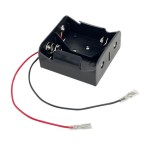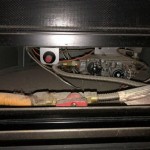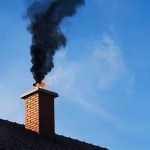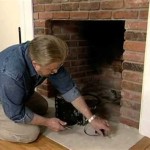Rutland Brick Stone Cleaner: Revitalizing Fireplaces with Effective Cleaning Solutions
Fireplaces, whether constructed of brick, stone, or a combination thereof, serve as focal points in homes and contribute significantly to ambiance and warmth. However, the regular use of a fireplace invariably leads to the accumulation of soot, creosote, and other residues on its surfaces. This accumulation not only detracts from the fireplace’s aesthetic appeal but can also pose potential safety hazards if left unaddressed. Rutland Brick Stone Cleaner offers a specifically formulated solution for effectively removing these stubborn deposits and restoring the original beauty of fireplace masonry.
The importance of using a dedicated brick and stone cleaner, such as Rutland Brick Stone Cleaner, stems from the inherent porosity and composition of these materials. Standard household cleaners often contain harsh chemicals that can damage the surface, leading to discoloration, erosion, or even structural weakening over time. Rutland Brick Stone Cleaner, on the other hand, is engineered with a balanced formula that targets soot and creosote without compromising the integrity of the brick or stone.
This article elaborates on the features, benefits, and proper application of Rutland Brick Stone Cleaner for fireplace maintenance. It will explore the types of stains typically found on fireplace masonry, the formulation and active ingredients of Rutland Brick Stone Cleaner, detailed application instructions, and essential safety precautions to ensure optimal results and user safety.
Understanding Common Fireplace Stains and Residue
The buildup on fireplace brick and stone is not merely surface dirt; it is a complex mixture of combustion byproducts that firmly adhere to the masonry. Identifying the specific types of residue present is crucial for selecting the most effective cleaning approach.
Soot is a primary component of fireplace residue. It consists of fine particles of carbon produced by the incomplete combustion of wood. Soot is typically black or dark brown and can create a grimy film on fireplace surfaces. Its powdery texture allows it to penetrate the pores of brick and stone, making removal challenging.
Creosote is another significant type of deposit found in fireplaces. This is a tar-like substance formed by condensed wood smoke. Creosote is highly flammable and poses a serious fire hazard if allowed to accumulate excessively in the chimney or on fireplace surfaces. Unlike soot, creosote can be sticky and difficult to dissolve. Its consistency can vary depending on the stage of combustion and the type of wood burned.
Water stains, often appearing as white or gray mineral deposits, can also mar the appearance of fireplace masonry. These stains are caused by water seepage through the brick or stone, which dissolves and carries minerals to the surface. As the water evaporates, these minerals are left behind, creating a chalky residue.
In addition to these common byproducts, fireplaces can also accumulate dust, cobwebs, and general grime over time. While not as tenacious as soot or creosote, these deposits contribute to an overall dirty and neglected appearance.
The Formulation and Action of Rutland Brick Stone Cleaner
Rutland Brick Stone Cleaner is specifically formulated to tackle the diverse range of deposits found on fireplace masonry. Its effectiveness lies in its carefully balanced blend of cleaning agents and solvents that work synergistically to lift and dissolve stubborn stains without harming the underlying material.
The cleaner typically contains surfactants, which are compounds that reduce the surface tension of water, allowing it to penetrate more effectively into the pores of the brick and stone. This increased penetration is essential for loosening the grip of soot, creosote, and other residues.
Solvents are often incorporated into the formula to dissolve oily or greasy components of the buildup. These solvents are typically chosen for their ability to break down creosote and other tar-like substances, facilitating their removal.
Some Rutland Brick Stone Cleaner formulations may include mild abrasives to gently scrub away stubborn stains without scratching or damaging the surface. These abrasives are typically finely ground and are designed to provide just enough agitation to loosen the residue without causing harm.
The pH of the cleaner is also carefully controlled to ensure that it is neither too acidic nor too alkaline. Highly acidic or alkaline cleaners can etch or corrode brick and stone, so Rutland Brick Stone Cleaner is formulated to be pH-neutral or slightly alkaline, providing effective cleaning without compromising the integrity of the material.
Finally, the cleaner may contain chelating agents, which bind to mineral deposits and prevent them from redepositing on the surface. This helps to prevent water stains and other mineral-based discoloration.
Detailed Application Instructions for Optimal Results
Proper application of Rutland Brick Stone Cleaner is crucial for achieving optimal cleaning results and preventing damage to the fireplace masonry. Careful adherence to the manufacturer’s instructions is paramount.
Before beginning the cleaning process, it is essential to prepare the work area. This includes covering nearby surfaces, such as floors and furniture, with drop cloths to protect them from splashes and drips. Wear appropriate personal protective equipment, including gloves and eye protection, to prevent skin and eye irritation.
Remove any loose debris, such as ash, cobwebs, or loose mortar, from the fireplace surfaces. This can be done with a brush, vacuum cleaner, or damp cloth. Removing this loose material will allow the cleaner to penetrate more effectively into the ingrained stains.
Apply the Rutland Brick Stone Cleaner according to the manufacturer’s instructions. This typically involves spraying or brushing the cleaner onto the affected areas. Ensure that the cleaner is applied evenly and thoroughly, covering all stained surfaces.
Allow the cleaner to dwell on the surface for the recommended time. This dwell time allows the cleaning agents to penetrate and loosen the stains. The specific dwell time will vary depending on the product and the severity of the staining, so it is essential to consult the manufacturer’s instructions.
After the dwell time, scrub the treated areas with a stiff-bristled brush. Focus on areas with heavy staining, using firm but gentle pressure to avoid damaging the brick or stone. For large areas, work in small sections to ensure thorough cleaning.
Rinse the cleaned surfaces thoroughly with clean water. This is essential for removing all traces of the cleaner and dissolved residue. Use a hose or wet sponge to rinse the surfaces, ensuring that all cleaner is removed.
Allow the fireplace surfaces to dry completely. This may take several hours or even overnight, depending on the humidity and temperature. Avoid using the fireplace until the surfaces are completely dry.
Inspect the cleaned surfaces for any remaining stains. If necessary, repeat the cleaning process, focusing on the areas that still show staining. In some cases, multiple applications may be required to achieve optimal results.
Essential Safety Precautions When Using Brick Stone Cleaner
While Rutland Brick Stone Cleaner is formulated to be safe for use on fireplace masonry, it is essential to take appropriate safety precautions to protect oneself and the surrounding environment.
Always wear personal protective equipment, including gloves and eye protection, when handling the cleaner. This will prevent skin and eye irritation. Inhaling cleaner fumes can also cause respiratory irritation, so ensure adequate ventilation during use. Consider wearing a respirator if working in a confined space.
Read and follow all the manufacturer’s instructions and safety warnings carefully. These instructions provide important information about the proper use of the cleaner and potential hazards.
Keep the cleaner out of reach of children and pets. The cleaner can be harmful if swallowed or ingested.
Avoid contact with skin, eyes, and clothing. If contact occurs, rinse immediately with plenty of water. Seek medical attention if irritation persists.
Do not mix Rutland Brick Stone Cleaner with other chemicals. Mixing chemicals can create hazardous fumes or reactions.
Use the cleaner in a well-ventilated area. This will help to prevent the buildup of harmful fumes.
Dispose of empty containers properly. Follow local regulations for the disposal of hazardous waste.
Test the cleaner on a small, inconspicuous area before applying it to the entire fireplace. This will help to ensure that the cleaner does not damage or discolor the masonry.
By following these safety precautions, one can ensure a safe and effective cleaning experience when using Rutland Brick Stone Cleaner to restore the beauty of fireplace masonry.

Brick Stone Cleaner Rutland

Fireplace Maintenance Brick Stone Cleaner 1 Piece 16 Oz Fcp83 6 Diy Part Center

Fireplace Wood Stove Glass Cleaner Rutland

Rutland Log Bright Soon Remover 570 6 Cunninghamliving Com

Rutland Gas Fireplace Cleanup Kit With Log Soot Remover White Off Glass Cleaner Brick And Stove Bn02 The Home Depot

Brick And Stone Cleaner 16 Oz Spray Bottle 8070 Polishes Glass C Repair

Rutland 8 Fl Oz Stove Grill And Hearth Glass Cleaner 84 The Home Depot

Brick Stone Cleaner Rutland

Cleaning Brick And Stone Outdoor Howto From Home Work With Hank

Firebrick Cleaner Dissolve Creosote Pellet Stoves East Coast Hearth
Related Posts








